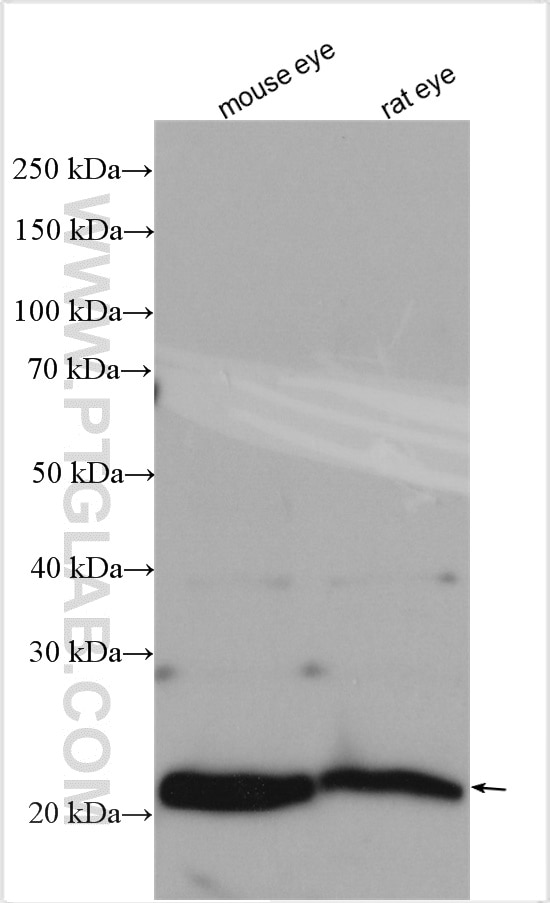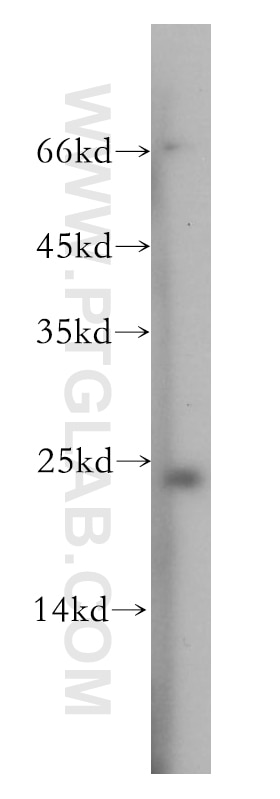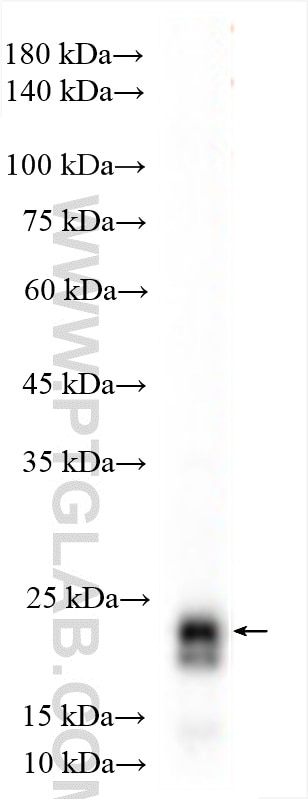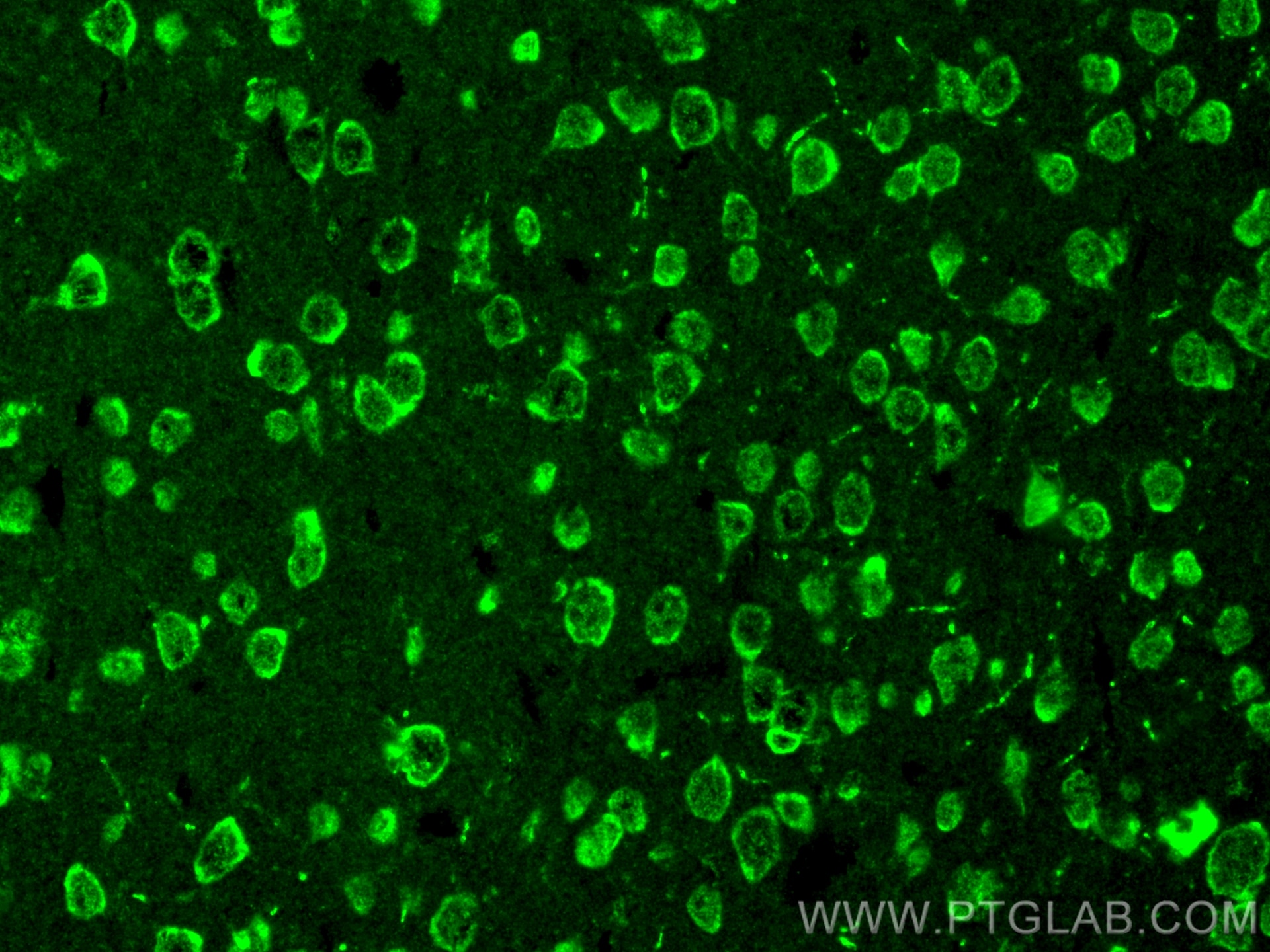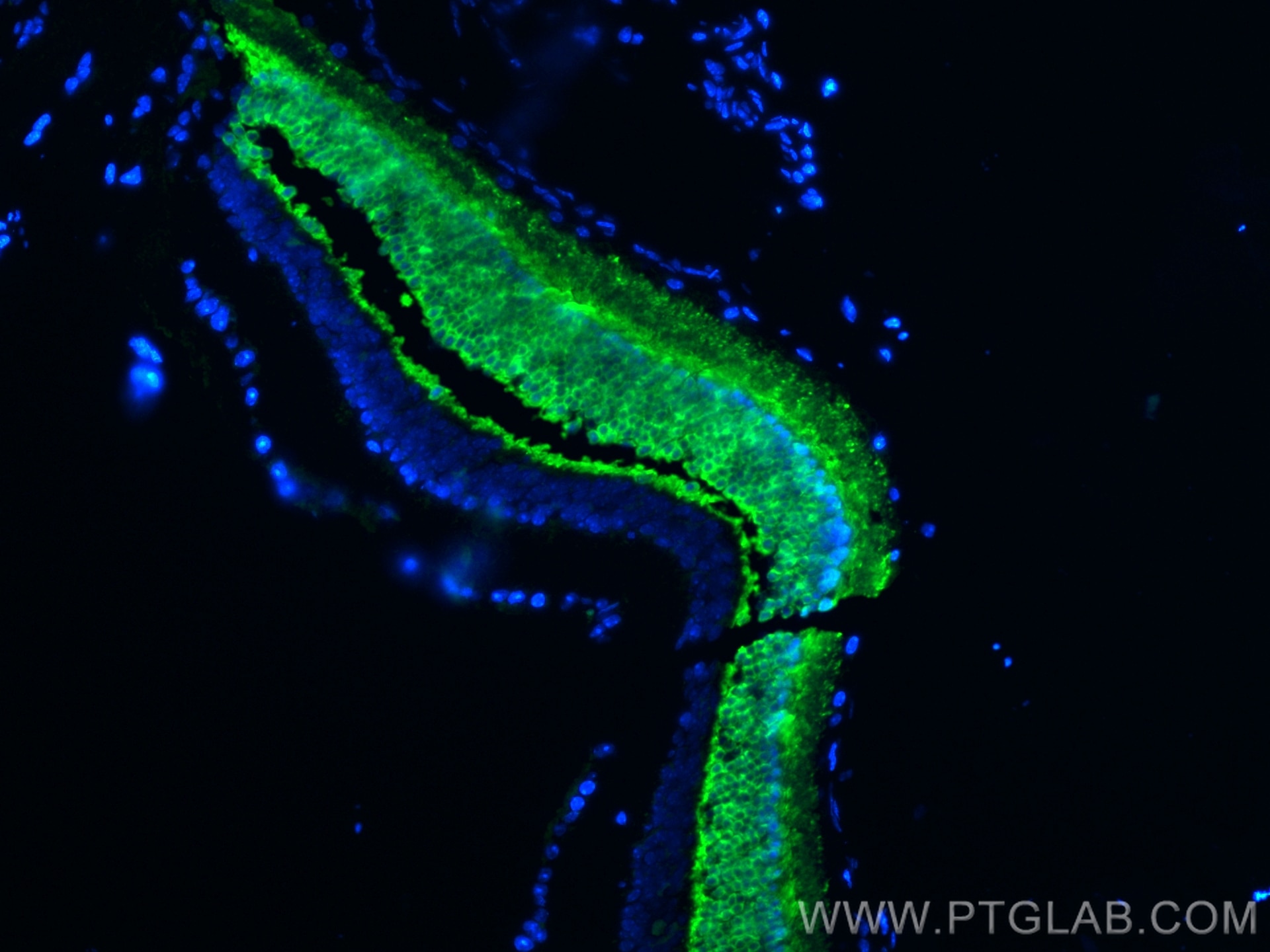Anticorps Polyclonal de lapin anti-Recoverin
Recoverin Polyclonal Antibody for WB, IF, ELISA
Hôte / Isotype
Lapin / IgG
Réactivité testée
Humain, rat, souris
Applications
WB, IHC, IF-P, ELISA
Conjugaison
Non conjugué
N° de cat : 10073-1-AP
Synonymes
Galerie de données de validation
Applications testées
| Résultats positifs en WB | tissu oculaire de souris, cellules Y79, tissu oculaire de rat, tissu rétinien de rat |
| Résultats positifs en IF-P | tissu oculaire de souris, tissu cérébral de souris |
Dilution recommandée
| Application | Dilution |
|---|---|
| Western Blot (WB) | WB : 1:500-1:1000 |
| Immunofluorescence (IF)-P | IF-P : 1:50-1:500 |
| It is recommended that this reagent should be titrated in each testing system to obtain optimal results. | |
| Sample-dependent, check data in validation data gallery | |
Applications publiées
| WB | See 5 publications below |
| IHC | See 1 publications below |
| IF | See 10 publications below |
Informations sur le produit
10073-1-AP cible Recoverin dans les applications de WB, IHC, IF-P, ELISA et montre une réactivité avec des échantillons Humain, rat, souris
| Réactivité | Humain, rat, souris |
| Réactivité citée | rat, Humain, souris |
| Hôte / Isotype | Lapin / IgG |
| Clonalité | Polyclonal |
| Type | Anticorps |
| Immunogène | Recoverin Protéine recombinante Ag0119 |
| Nom complet | recoverin |
| Masse moléculaire calculée | 24 kDa |
| Poids moléculaire observé | 23 kDa |
| Numéro d’acquisition GenBank | BC001720 |
| Symbole du gène | Recoverin |
| Identification du gène (NCBI) | 5957 |
| Conjugaison | Non conjugué |
| Forme | Liquide |
| Méthode de purification | Purification par affinité contre l'antigène |
| Tampon de stockage | PBS avec azoture de sodium à 0,02 % et glycérol à 50 % pH 7,3 |
| Conditions de stockage | Stocker à -20°C. Stable pendant un an après l'expédition. L'aliquotage n'est pas nécessaire pour le stockage à -20oC Les 20ul contiennent 0,1% de BSA. |
Informations générales
Recoverin, belonging to a family of the neuronal calcium sensor (NCS) proteins, has a restricted expression in retinal photoreceptors or neurons or neuroendocrine cells. It has been suggested to play a role in light and dark adaptation by regulating rhodopsin phosphorylation. Recently, it has been found that autoantibodies against recoverin (24 kDa) have been strongly associated with cancer -associated retinopathy (CAR) syndrome, a paraneoplastic disease of the retina. But functions of recoverin in cancer cells remain unknown.
Protocole
| Product Specific Protocols | |
|---|---|
| WB protocol for Recoverin antibody 10073-1-AP | Download protocol |
| IF protocol for Recoverin antibody 10073-1-AP | Download protocol |
| Standard Protocols | |
|---|---|
| Click here to view our Standard Protocols |
Publications
| Species | Application | Title |
|---|---|---|
iScience Identification of early-onset photoreceptor degeneration in transgenic mouse models of Alzheimer's disease. | ||
iScience A Genetic modification that reduces ON-bipolar cells in hESC-derived retinas enhances functional integration after transplantation. | ||
iScience One-step induction of photoreceptor-like cells from human iPSCs by delivering transcription factors. | ||
Sci Rep Preconditioning the Initial State of Feeder-free Human Pluripotent Stem Cells Promotes Self-formation of Three-dimensional Retinal Tissue. | ||
Sci Rep Microglia dynamics in retinitis pigmentosa model: formation of fundus whitening and autofluorescence as an indicator of activity of retinal degeneration. |
Avis
The reviews below have been submitted by verified Proteintech customers who received an incentive forproviding their feedback.
FH Alessandro (Verified Customer) (07-27-2022) | No aspecific staining, great outcome
|
